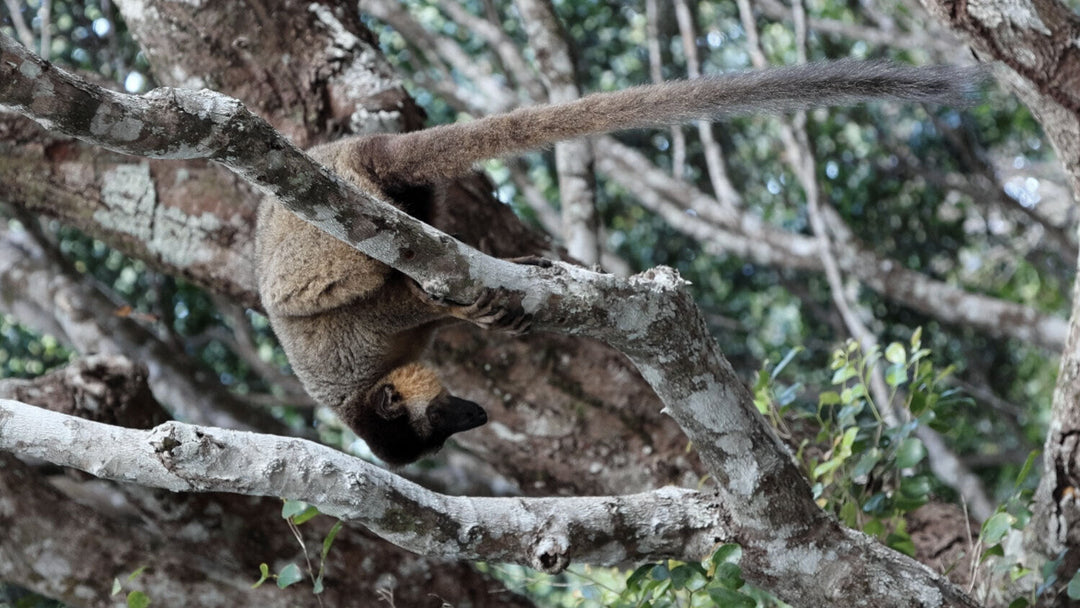Yosemite - searching for bears... [2/3]
The second in a series of three blog entries from NatureSpy Wildlife Biologist Hannah Henshaw, describing a quest for bears in three American National Parks. We've already had Yellowstone… next up; Yosemite…
Some 900 miles away from Yellowstone, we arrived in Yosemite National Park located to the East of California, to rain and heavy mist. Smaller than Yellowstone, it covers 1,169 square miles with 1,101 of this being designated wilderness.

The stunning upper Yosemite Falls
That being said, with 214 miles of paved roads and almost 4 million visitors in 2012 alone, beauty spots and look-outs can become exceptionally congested with cars and coaches.
Conversely, there is over 800 miles of trails to hike and because of the lesser area size, bear sightings can be more common so we were quite optimistic.
Driving through the park on our initial arrival, however, the fog made scouting potential trails or signs of wildlife impossible. Even the iconic El Capitan and Half Dome were barely visible.

El Capitan and Half Dome obscured by fog
Day two, the fog had lifted and we drove to Yosemite village to find more information about bears in the area. En route we stopped by two of the most famed waterfalls Yosemite is renowned for.
First up was Bridalveil Falls, and although just 617 feet high, it is one of the most prominent waterfalls in Yosemite and very dramatic.

The dramatic Bridalveil Falls
Second was Yosemite Falls (top). An incredible 2,425 feet, 3 tiered waterfall set in granite cliffs. It is the highest waterfall in North America and sixth highest in the world!
In the village we discovered that they actually have a team here who's job it is to scare bears away from public places.
Camp sites, cabins, lodges and carparks are literally like giant honey pots to bears. There are signs and warnings about keeping all food stored in bear-proof containers, and never leaving anything on show.
If there are food bags or wrappers left on car seats, a bear is sure to break in to steal it.
There is strict policy about keeping wild animals wild for their own safety and protection. Feeding bears is stringently prohibited.
If bears beg and begin to expect food and its not given, this is when they can become aggressive and subsequently have to be controlled.
So for their own sake, as much as the publics, bears are discouraged from going near civic areas.

Now entering Yosemite wilderness...
In this case, our best chances of catching a glimpse of one was going to be out on the trails deeper in the forest. But with only a couple of days here and 800 miles of hikes to choose from, it was going to have to be pot luck.
We headed back to our cabin with trail maps to decide on where to go.
Driving back we did see some wildlife; a mule deer with two fawns trying to cross the road.

A mother mule deer tries to lead her offspring across the road
It was fascinating how cautious they were of the roads compared to the ungulates in Yellowstone who cross at will, and that teaching young when to safely cross was a more prominent adaptation here because of the busier roads all year round.
That night talking to other hikers around the fire we were told of a bear sighting; a mother and a cub, on a trail that was less than five minutes from our cabin.

Our cosy Yosemite Cabin at Evergreen Lodge
The next day, in heavy rain we set out on the same trail; a short 3km hike to one of the smaller waterfalls in Yosemite, the 30 feet Carlon Falls, hoping the pair would still be around.

Carlon Falls
We climbed to the top of the falls, and carried on climbing up the rocks further still, the path getting narrower and trees, bushes and branches getting lower.
We had to bend and crouch to get through the small passage-ways that we soon realised were about bear height... We were on a route used by bears.
Following the bear path as far as we could, it became too steep and the rocks too slippery from the rain. We doubled back hoping for a chance encounter on our return, making more noise so as to not surprise any bear that may be close by. Sadly, the trek was fruitless.
Perhaps we were a little spoilt by the tranquility of Yellowstone, but Yosemite often felt overcrowded and just not as ‘wild’.

A slightly clearer view of El Capitan
However, despite the lack of wildlife seen, Yosemite is undoubtedly an incredible piece of wilderness and has some impressive features.
Nevertheless, we packed up to move on to our last destination, and hope, of seeing a wild bear.


